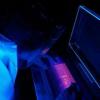That's a pretty good summary in the last bit.Another point is that beneficial and deleterious are context sensitive. A change in the genes that control wing development for example as given by the dissenting girl that is probably reading some creationist propaganda is not deleterious in the context she suggests and doesn't even mean the instructions to build a wing are gone, just changed. In many beetles cases for example, there is a hard outer casing that has developed to protect the wing in a closed state rather than the wing being lost. Though I'm not familiar with beetle evolution exactly, its probably a duplication of wing development that then over time accumulated more changes that changed it from an organ for flying into one for protecting the bit that did work for flying. Mutations randomly generate changes, it is feedback in the form of survival that encodes these changes as information into the DNA rather than them just being random noise.
The process of natural selection is the method by which evolutionary changes are selected for, and by which they are "filtered" through to the next generation. As mentioned in the response to the girl's email, most changes aren't nonsensical or destructive, they simply fail to change anything, as they're isolated to several or even one residue and produce basically no change in protein function or conformation. It's also important to note that all evolutionary changes have, at the core of their mechanism, a molecular genetic basis. This means that every change that is seen in vivo in evolution can be tracked to a specific molecular event, likely some physical swapping of nitrogenous bases due to DNAP errors, physical recombination, or sexual recombination and DNAP errors in development. It is also important to note that after the moment of conception and the end of sexual recombination in eukaryotes, you will likely not see much of a significant change in genetic composition; another reason for the intensely slow scale of evolution.
Also not totally sure about the point of the whole sickle cell anaemia thing except for proof that yes, accumulated mutations are affected by natural selection, and tend to persist in places where they're most favoured by the natural selection process.















